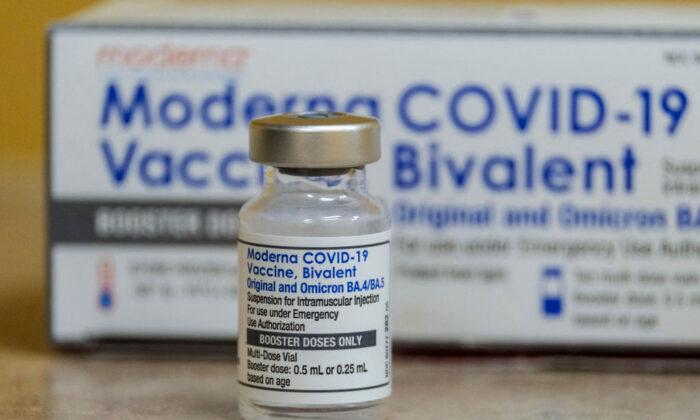Australia has introduced Moderna’s bivalent vaccine into the COVID-19 booster program, which is anticipated to provide more protection against the Omicron variants.
The Australian Technical Advisory Group on Immunisation (ATAGI) recommended that the Moderna bivalent vaccine, that targets both the original Wuhan strain and the Omicron variant BA. 1, be used as a booster dose in people aged 18 and over.
Moderna’s bivalent vaccine is Australia’s first available combination shot and is currently only registered for use as a booster.
It was provisionally approved by the Therapeutic Goods Administration (TGA) in September.
ATAGI recommends waiting as least three months after the most recent COVID-19 vaccine dose or infection.
Catherine Bennett, chair of epidemiology at Deakin University, told Sky News Australia that the updated booster shot was “better targeted” at Omicron.
Effectiveness of the Updated Moderna Booster
The Moderna bivalent combination shot uses mRNA technology and has a “similar safety and reactogenicity profile” to the original Moderna vaccine, based on data from an ongoing clinical study, the TGA said.Researchers recorded more participants contracting COVID-19 in the group who received the updated booster.
In a breakdown of those without prior COVID-19 infection, more participants in the updated booster group got COVID-19—11 or 3.2 percent—than those who received the old booster—5 or 1.9 percent.
Researchers said the measurements showed a better immune response after the updated booster, which “indicate that bivalent vaccines may be a new tool in the response to emerging variants.”
The Food and Drug Administration in the United States has also authorised the use of Pfizer’s bivalent COVID-19 that targets the Omicron BA. 4 and BA. 5 subvariants.
Pfizer’s bivalent COVID-19 vaccine has yet to receive provisional approval in Australia.






Friends Read Free